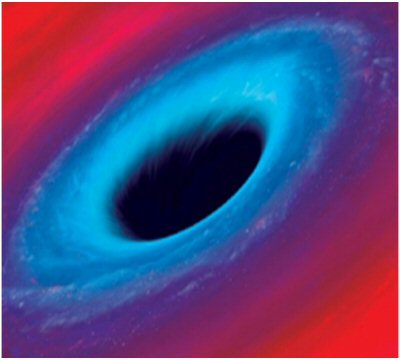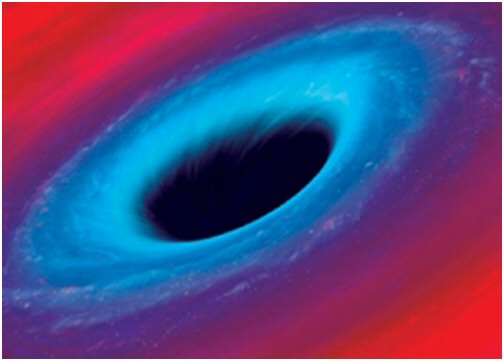
14 Jul Accretion disk echo mapping
Accretion disk echo mapping of high red-shift quasars

Accretion disk. Image source: www.outerspacecentral.com
The title is a mouthful, here is a break-down of what it means and what research SALT is doing, courtesy of SALT astronomer, Dr Encarni Romero Colmenero.
Q: What is an accretion disk?
A: At the centre of an active galactic nucleus (AGN), a compact region at the centre of every galaxy, is a massive black hole. The galaxy is always accreting or releasing material into that black hole because the black hole has gravity. The mass of the black hole is comparable to the mass of the galaxy, at millions of solar stars in mass, even though it is a small part of the galaxy.
Everything in space has a velocity, for this reason, the material that is released by the black hole does not fall straight into it. The material instead rotates at increasing speed as it approaches the black hole around the massive black hole and forms a disk, called an accretion disk.
Q: What is red-shift and how does it work?
A: Red-shift, in a peculiar way is a measure of distance, similar to the Doppler effect with regards to sound, a red-shift means that the objects being studies in the universe seem to be moving further away. This is because the universe is expanding. The further away the objects move from the earth, the faster they are travelling. So higher red-shift means more distant objects and lower red-shift means more nearby objects.
Q: So, finally, what is accretion disk echo mapping and how does SALT conduct go about doing that?
A: A continuum is emitted from the centre of the Active Galaxy Nucleus (AGN) and is received as light as it travels away from the centre and it varies very quickly. There are other high energy particles, however, that travel towards the other side of the AGN before being re-emitted. The extra travelled distance of the high-energy particles tells us where the particles are. The time delay between the continuum and how fast-moving clouds are re-emitted is also measured by SALT. The broad line region is heated up by the continuum and it re-emits it into emission lines, as light and that extra distance that the high-energy particles travel is measured by SALT using spectroscopy.

